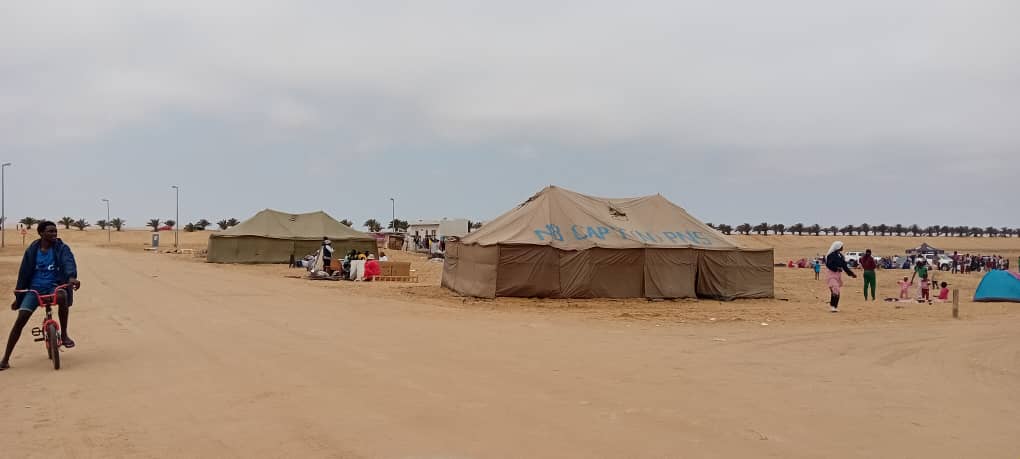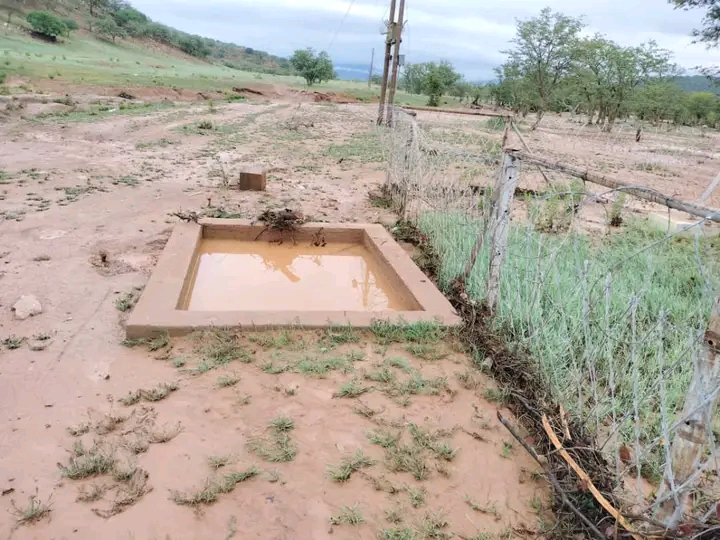DESPITE a drier than normal March over large parts of Namibia, the bulk of the country remains on course to recording an unusually bountiful rainy season for 2008-09.
The Meteorological Service of Namibia yesterday released a summary and analysis of rainfall figures recorded in Namibia during March and from the start of the rainy season in October to the end of March. These figures indicate that, after a record-setting wet February in places like Windhoek and Ondangwa, March turned out to be much drier.The rainfall totals recorded at several rainfall measuring stations below the normal figures measured at that stage of the rainy season.Except for places in the far southeast of Namibia and around Tsumkwe, though, the rest of the country has been recording rainfall totals well above the norm from the beginning of October to the end of March, the Meteorological Service’s rain statistics show.Flood-hit areas of the country still received normal or above normal quantities of rain last month. At Katima Mulilo in the Caprivi Region, 90,9 millimetres of rain was recorded last month, which is slightly more than its normal total of 85,8 mm for that month. At Ondangwa, where an average of 94,5 mm of rain is recorded during March, 94,4 mm was measured last month.Also at Hochfeld, where 147,5 mm was measured last month, compared to the March average of 68,2 mm, and at places in the south of the country like Keetmanshoop (51,2 mm recorded last month, compared to 36,9 mm in an average year) and Gochas (46,7 mm measured last month, compared to 35,6 mm in an average March) more rain than in an average March was recorded last month.March was however characterised by a high decline in rains throughout Namibia, compared to February, according to the Meteorological Service.An exceptionally wet February has however helped push rainfall totals at most measuring stations well beyond the figures that could be expected in a normal rainy season between October and the end of March.At Katima Mulilo, 826 mm was measured from October to the end of last month. In an average rainy season, that figure would have been 633,9 mm. At Rundu, 676,9 mm was recorded from October to the end of March, compared to 533,7 mm in an average rainy season.Ondangwa received double its normal quantity of rain from October to the end of March: 834,7 mm, as against 417,3 mm in an average year.Okaukuejo in the Etosha National Park received 590,6 mm from October to the end of March, compared to 323,5 mm in an average rainy season.At Grootfontein, 771,5 mm was recorded in this period, compared to 519,3 mm in the same period in a normal year.Khorixas also received almost double its normal rainfall total between October and the end of March, with 391 mm recorded there this season, compared to 198,2 mm in an average year.At the Windhoek Met Office, 551,7 mm was measured over the six months from October to March. In an average rainy season, this figure would have been 319,7 mm.At Rehoboth, 352,6 mm was recorded in that period, compared to 201,2 mm in an average rainy season, while Gochas received 324,5 mm, compared to 161,1 mm in the same period in an average year.Keetmanshoop has also received more rain than usual, with 162,6 mm recorded from October to the end of March, as against 133,5 mm in an average year.In the eastern part of the Karas Region it has been drier than in a normal year, though. At Karasburg, 56,4 mm was recorded from October to the end of March, compared to 113,6 mm in this period in a normal year. At Ariamsvlei, the rainfall total of 57,5 mm from October to the end of March is also substantially below the total of 100,6 mm received in that period in a normal rainy season.
Stay informed with The Namibian – your source for credible journalism. Get in-depth reporting and opinions for
only N$85 a month. Invest in journalism, invest in democracy –
Subscribe Now!










